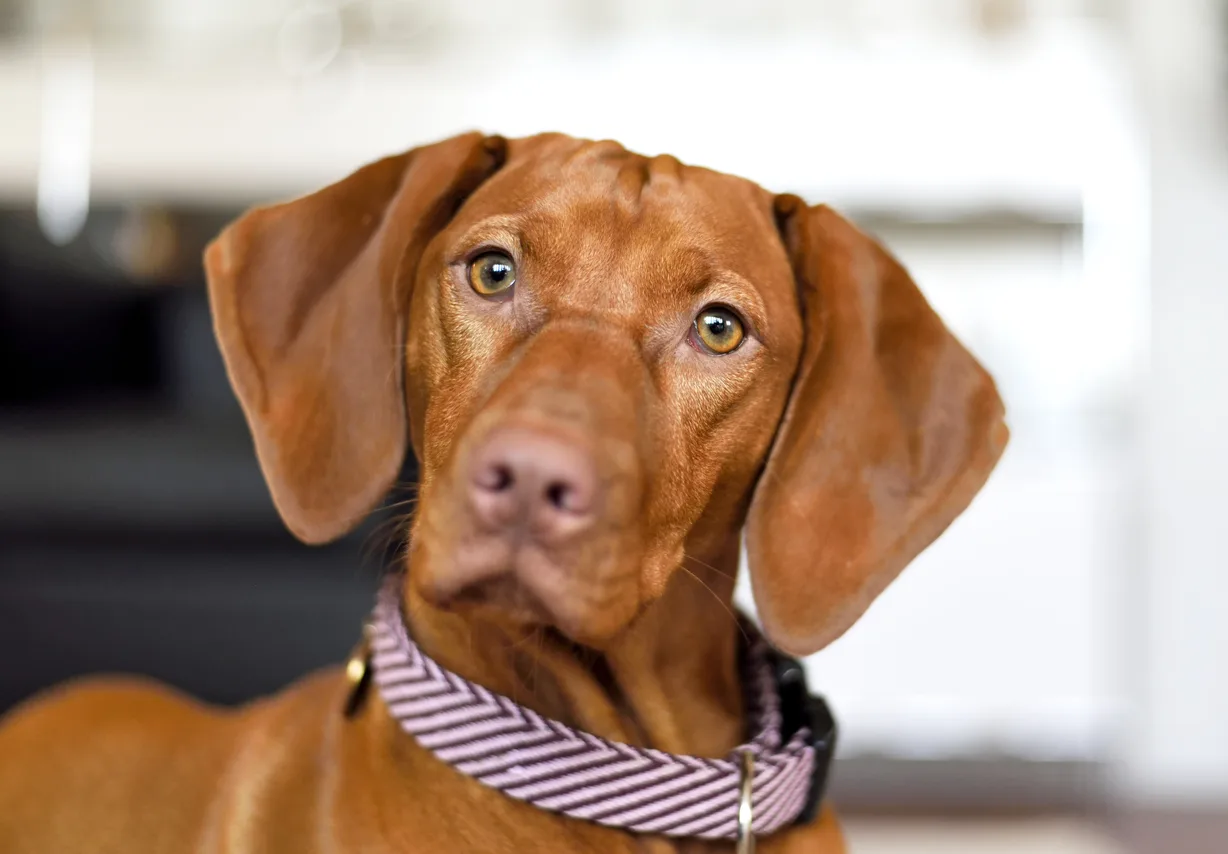You’ve adopted a Vizsla pup. Congratulations! Your new companion will provide you with years of friendship and loyalty. He or she may be a sporting dog, but that doesn’t mean they won’t be a snuggler, a television-watcher, and a long-walk-taker, too, so enjoy those precious first few months getting to know your companion.
Introducing your new buddy to your home (and those within it) correctly is important. It can be a bit overwhelming for dogs to change houses; stress is extremely common and some dogs react better than others. If you’re living alone, it’s best to take at least the first week off to help your pup acclimatize to his or her new home. If you already have pets, children, or multiple family members, introductions require a specialized approach.
Vizslas are sensitive, loving dogs. They’re also highly intelligent and pick up on stress and emotion easily. They’re also incredibly smart and require a fair amount of exercise, so the adjustment isn’t just on your dog’s part, but on your part, too. This 10-step guide will provide you with the basics so you can structure the first few days as best for everyone involved.
Don’t Introduce Immediately
The precious first few minutes and hours after you arrive at home are often the most overwhelming. Your new pup is already wondering where she is and what all these new scents are, so avoid giving her too much input for the first little while.
Instead, have a safe, quiet room set up for her as soon as she arrives – preferably a room she’ll spend time in anyway – and allow her to relax, eat, get a drink of water, and explore before you move on to in-person introductions.
Use this room as her safe space if you run into any additional problems with intros.
Hoping to surprise the kids with a new pup? As cute as this is, it isn’t really recommended. Kids should play a role in the adoption process to ensure that they best understand how to interact with and care for the dog in advance.
Keep Kitties Comfortable
If you have cats, take special care to ensure that they don’t dive-bomb the dog, either while in her crate or outside of it. Provide kitty with her own safe space (cat trees work best, but even a tall, stable shelf will do) so that she can get away from your new Vizsla when needed.
Never force the cat and dog to interact; it almost always has traumatic consequences. Remember that your Vizsla is a sporting dog; while they get along just fine with most felines, that prey drive can sometimes kick in. Be especially careful if you’re introducing kittens.
Walk the Dogs Together (Outside of Your Home)
If you have dogs already, you can increase the odds of a successful introduction by allowing them time to get to know your new Vizsla outside of your home. Neutral territory (be it the sidewalk or a dog park) takes away your dogs’ need to prove that he owns his territory. It’s the equivalent of meeting someone at a coffee shop on a first date or going to their home.
If you can, have one person walk the new dog and one person walk the others. Stay separated at first, and then move together slowly as you adventure out. Once you’re sure they can walk side-by-side without any arguments, have the same person walk the new Vizsla with one or more of the others.
Assuming all goes well for a time, you can move on to attempting off-leash play in neutral territory.
Start Crate or Kennel Training Immediately
The first point mentioned creating a safe space or room for your new pup. You’ll do both you and your dog a favor if you also begin crate or kennel training at the same time.
Why is this important for introductions? Mostly because it allows you to confine your new pup at a moment’s notice if something goes wrong.
On the other hand, crate training can be stressful for some puppies, too, so how do you balance the need to keep things low-key with the need to crate train?
Start by making the crate a place where your dog wants to go, not one that’s used as a punishment. It should be large enough for him to move around in easily. It’s even better if he or she can walk a few paces in either direction, too.
Fill the crate with comfortable blankets, a snuggly dog pillow, and a puppy-appropriate treat; try a Kong filled with peanut butter.
Don’t enclose your pup at first; just focus on getting her to play or relax in the crate with the door open.
Once he or she shows signs of comfort, like napping or lying down inside, try closing the door for a few seconds at a time. If your dog shows discomfort, open the door to show her that she isn’t trapped and start the process again.
A note on introductions and crates: the goal is to have your new dog see the crate as his or her personal territory. For that reason, it’s best to keep children and pets away at first. If you struggle with this step, drape a washable blanket or tarp over the crate itself. Doing so makes it feel like a den and will help your pup to feel safe.
Start with Kids (Not Babies)
If you’re also expecting, or you have a newborn at home already, you may be tempted to let your new Vizsla pup meet baby right away. In theory, the Vizsla is fairly patient; most do fine when meeting infants, but you should never assume that will be the case for your little one.
Babies can be a little terrifying for dogs (and sometimes humans, really) who aren’t used to them. Leaving the introductions to the last minute isn’t wise.
Instead, start by introducing your dog to adults. Then, see how he fares with a teenager, even if it’s a friend of the family or neighborhood sitter. If everything goes okay, move the age down to childhood.
Finally, have someone hold the baby and bring the Vizsla into the room. Let him move closer on his own time; if he doesn’t show interest, that’s okay – he may be evaluating the situation further first. Most dogs will give a few sniffs and move on to something that’s more interesting, like food.
Monitor Interactions Between Kids & Dogs
Even after your pup meets the new baby, you should monitor their interactions closely for several weeks or months. Never leave a child under the age of 8 alone with the dog, especially if he or she doesn’t have experience interacting with your companion safely in the first place.
It takes just a second for an infant to grasp a dog’s ear in the wrong way for your pup to react in fear. While this is usually rare, it’s always best to play it safe.
Here’s the great news: most pet parents who adopt a Vizsla notice their playful and accepting side almost immediately during the introduction process. It’s extremely common for adopters to find that the process goes off without a hitch. If you do run into issues with your introductions, stop, separate your new pup back to his safe room, and contact a behavioral specialist for further guidance. Most importantly, don’t panic; you can work out

